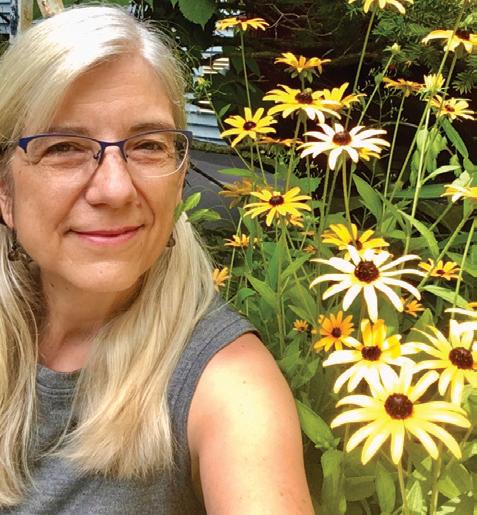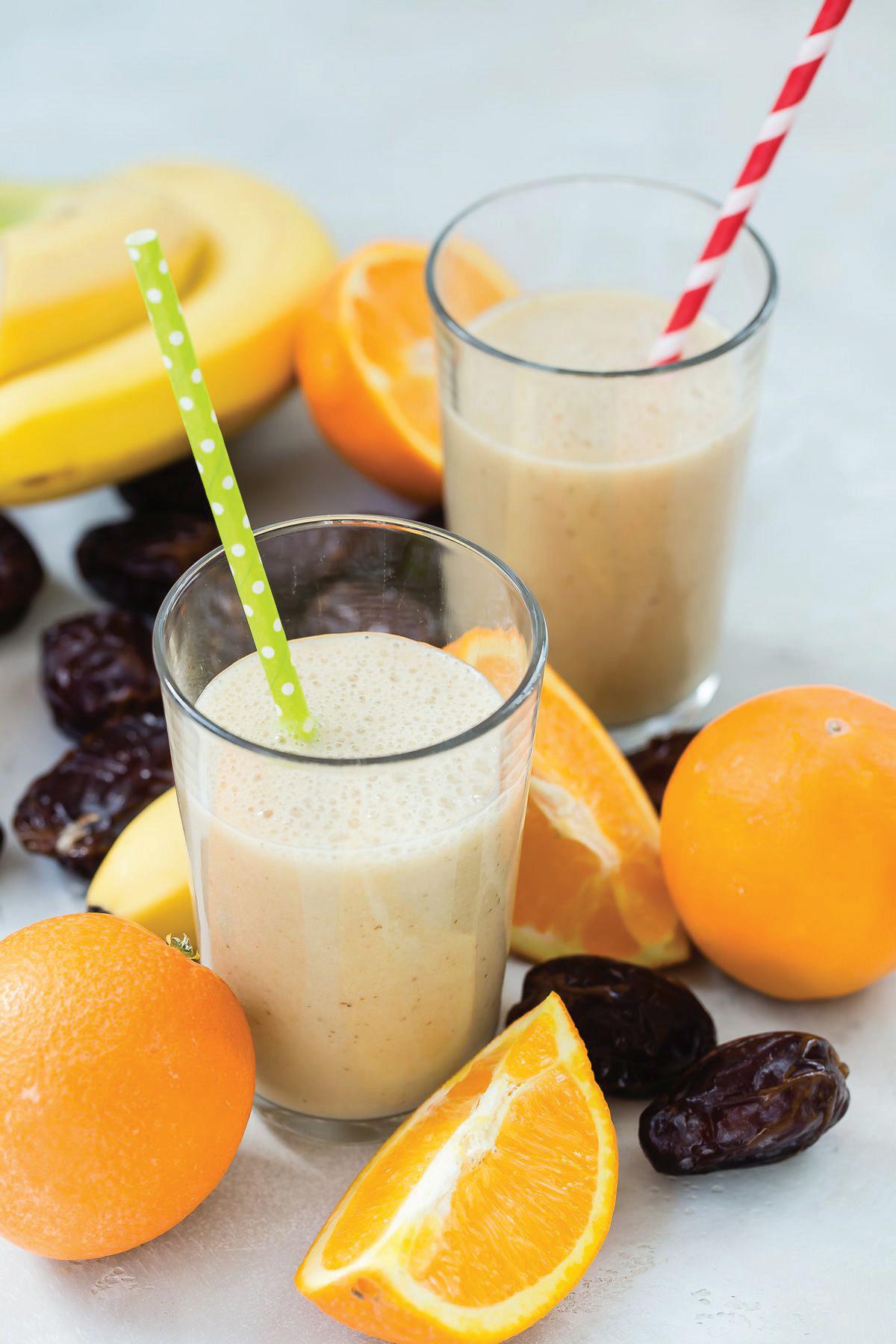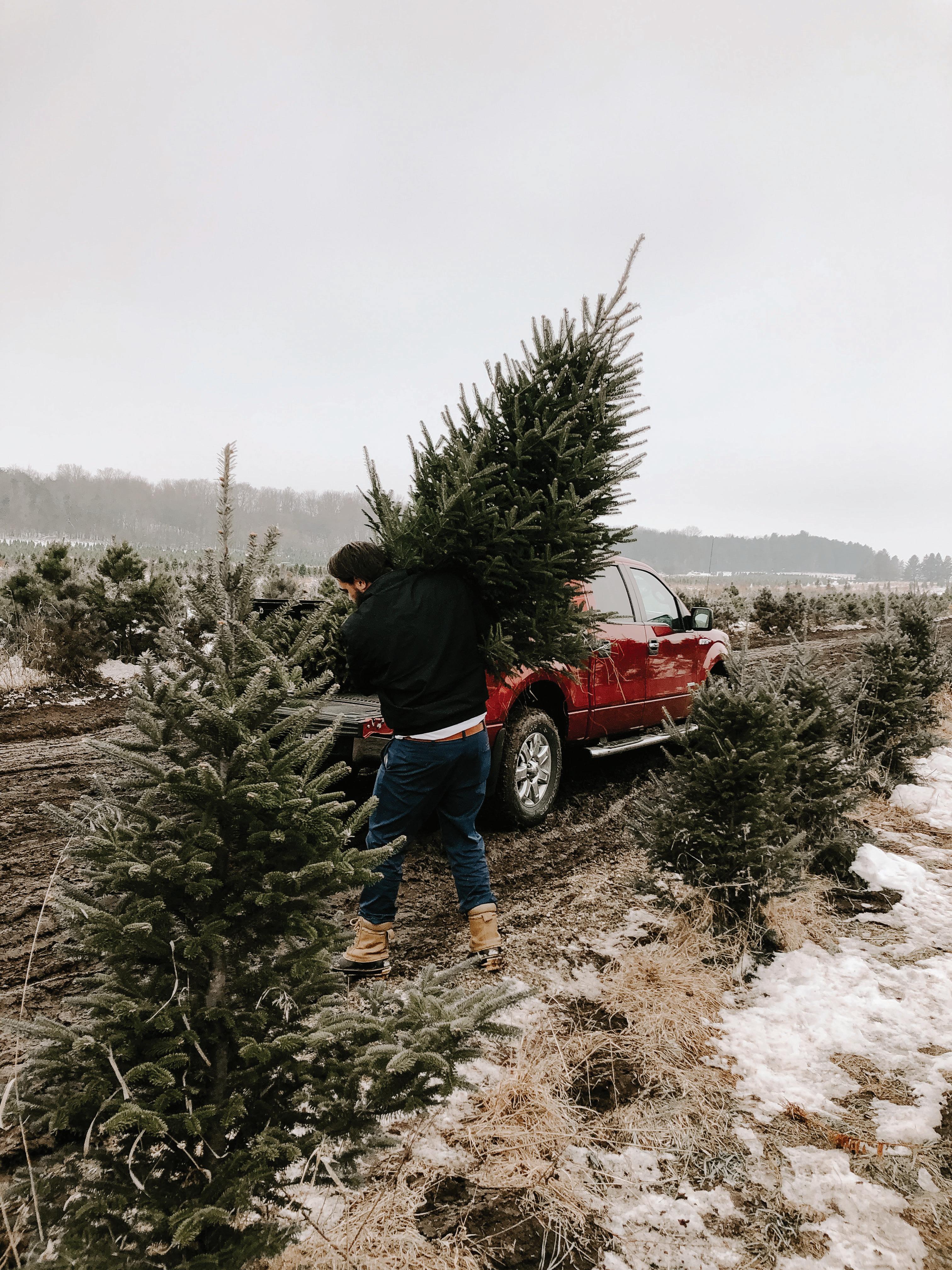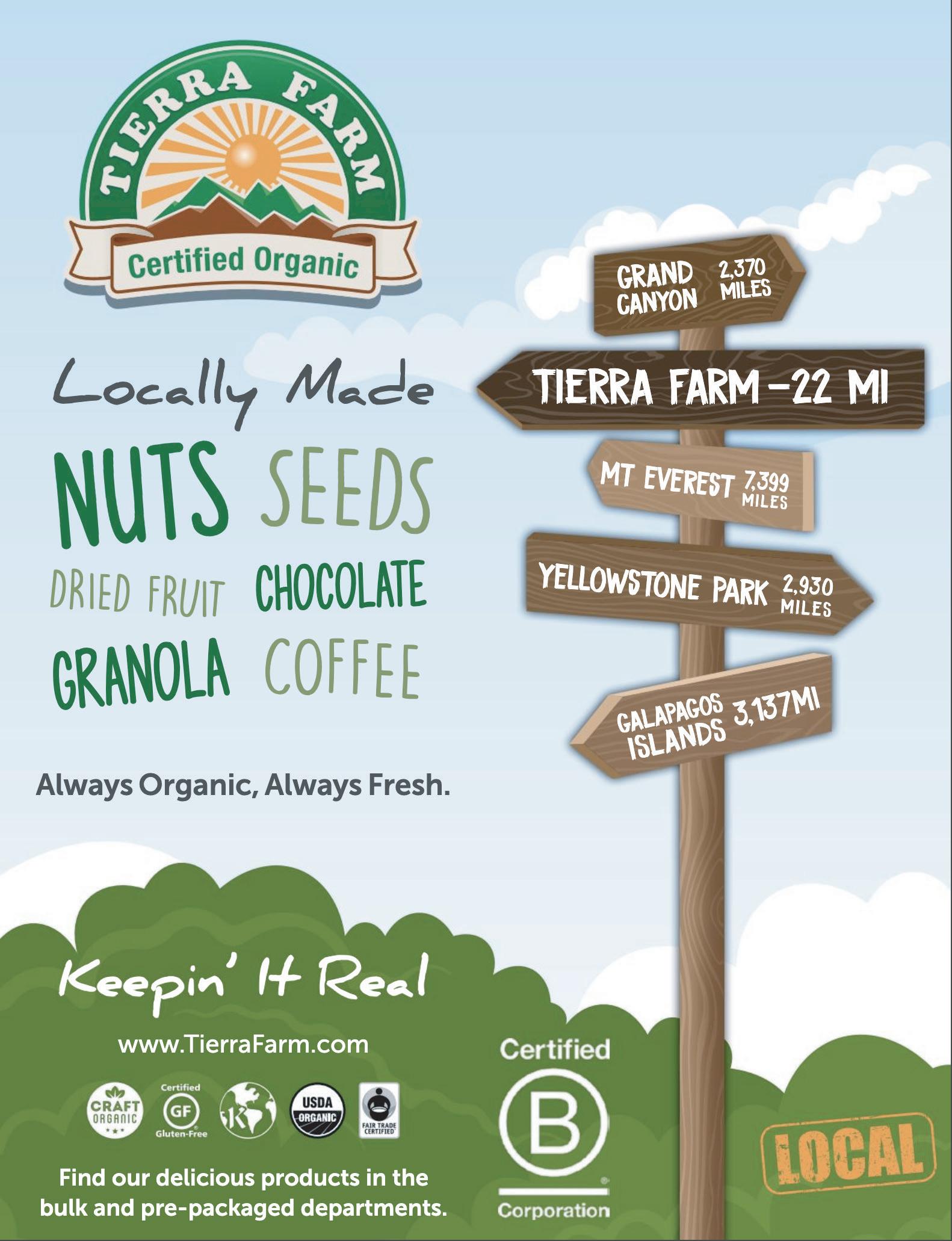


O Christmas Tree! (O Arti cial Christmas Tree?) Health for Non-Majors: What is an Antioxidant? From the Archives: Timeless Gifting WisdomTraditions ∙ Nov/Dec 2022 Coop Scoop A FREE publication from Honest Weight








Rebecca Angel has been a part of Honest Weight for twenty years and is Managing Editor of the Coop Scoop. When not at the co-op, Rebecca is a teacher, musician, and writer, currently working on a memoir about her experience with Cushing’s Syndrome. www.RebeccaAngel.com
Letter from an Editor
is a retired cataloger at the New York State Library, where she worked for over 35 years. She wrote a 10-year blog called “Typo of the Day for Librarians” and has been a Co-op member since the 1980s.

Ruth Ann Smalley PhD, is our Content Editor. An educator and writer, with a 4-digit Co-op member number from the early 90s, Ruth Ann offers wellness, writing, and creativity coaching through her practice at www.vibrant-energies.com or www.ruthannsmalley.com.
ty and doctor visits and various new health regimens I’ve had to adopt due to these sudden revelations has greatly intensified my personal yearlong ordeal.
your family, community, and the global environment? What happens to the tree after the holidays are over?
If assembling a traditional cheese board is on your to-do list, you’ll want to read Pat Sahr’s Producer Profile which highlights not only “Nettle Meadow Farm’s” award winning cheeses but also its mission to provide sanctuary for over a hundred farm animals. (It sounds like a road trip is in my future!)
Natalie Criscione remembers shopping at the Quail St. Honest Weight location. She wears many hats: educator, writer, artist, musician, property manager, advocate, volunteer. She loves being part of the Coop Scoop team!




Letter from an Editor
By Natalie Criscione
TBy Carol Reid
The months and weeks leading up to and beyond the winter solstice are rich with traditions. Whether you celebrate with lights, deco rations, gatherings of friends and family, special meals, stories, donations, gifts, or something else, you probably look forward to embracing it ALL each year. This issue of the Coop Scoop challenges us to explore some of those traditions, offers us ideas for new traditions, and gives us food for thought.
his has been a rather fraught year for me and not just for the obvious Covid-related reasons. I’ve also learned that I have two different physical disorders, one fairly common for people my age and the other one far less common. I made the first discovery right at the beginning of the pandemic and the other one just after getting my second vaccine dose. On top of the anxiety and isolation and fears of leaving the house in general (just like everybody else), attempting to simultaneously deal with all the uncertain-
In “Choosing the ‘Greenest’ Tree,” Rebecca Angel Maxwell unwraps some of the issues related to buying a real vs. an artificial tree. What is the best choice for
Honest to Goodness
But obviously, I’m not the only one who’s been struggling with such issues—wheth er for oneself or one’s family members, friends, or colleagues; whether Covid-re lated or not; whether serious or routine. It’s enough to make you downright sick, and often quite desperate and depressed to boot. People have been afraid to make or keep their medical appointments, to go in for testing, or to even be around other afflicted people. Mental and emotional illnesses have been exacerbated and are sadly on the rise. But there are also a lot of resources available online right now, and there’s hope that we can finally beat the Virus and deal with whatever else might be currently ailing us.
In Coop 101, Lucia Hulsther examines the Co-op’s mission to serve people both regionally and globally. She describes not only supplier partnerships but regional commitments with non-profits that aid in enriching communities near and far. During the months of November and December, “Be the Change,” one of many programs Lucia mentions, features The Food Pantries for the Capital District, about which I had the privilege of writing.
Meanwhile, Dr. Madeline takes us on a journey at a cellular level by examining (in layman’s terms—happy electrons) why antioxidants are a good thing for our bodies, and where you can find them in the co-op. Think of them as gifts for your cells.

In this issue of the Coop Scoop, entitled “Heal,” Rebecca Angel writes about her own experience with healing heartburn; Melanie Pores makes what’s good for you also taste good with her delicious Date-Sweetened Smoothie recipe; Ruth Ann Smalley gets to the root of things with an article on Regenerative Agriculture; and [etc.]. We’re hoping that all of the articles and information contained herein will contribute to helping all of us on our personal journeys toward renewed health and healing.
As for gift-giving traditions, look no further. An archived article from 1980, has lots of good advice for co-op shop ping! Make new traditions by drawing on the old.
Finally, as you’re planning your tradi tional menus, don’t miss the recipe for “Melanie’s Favorite Healthy Homemade Samoa Cookies,” sure to become a new addition to your baking repertoire.
Cheers!
“What exactly IS an “edible garden?” Whenever I try to explainI’m explain this to someone, I inevitably hear Gene Wilder in Willie Wonka and the thing inside is eatable, I mean edible, I
Bach Flower Remedy Classes

I
We’ve started with a modest plan that includes some of the “easier” plants to grow (including: lettuces, tomatoes, zucchini squash, pole beans, peppers, and various herbs) and hope to expand our planting based on what works (or doesn’t) this


t is with great excitement that Honest Weight welcomes Nini Gridley to the store for a series of Bach Flower Remedy classes. You may be familiar with Bach’s “Rescue Remedy” pastilles, but if you haven’t used any of the other 38 Flower Remedies, this is a fantastic opportunity to try them.

Nini has been a Bach Foundation Registered Practitioner since 2002 when she began to use the Remedies in her private practice, Full Spectrum Healing TM. She has since dedicated her career to teaching others how to heal using these gentle vibrational remedies derived from nature.








Interested in learning more about how to add them to your support kit? Join us in the Community Room on November 1st at 10am or December at 6pm for Bach Flower Remedies for Holiday Stress where you’ll learn how to use these simple solutions that can help restore health and wellness. Bach Flower Remedies for Winter Blues will be held on Tuesday, January 10th at 10am. Registration links are on our website and drop-ins are welcome if space allows.
Make sure to bring a water bottle to each class to sample the Remedies for yourself. Light refreshments and coupons will be provided.
Fresh News!
Coop Scoop
3 TRADITIONS
Mathew Bradley is our Layout Editor. He has been the Lead Designer at Honest Weight since the new store. Outside he enjoys writing band, tending to his garden, and training his English Cocker Spaniel, Cricket, for field work.
Honest Editors
Lucia Hulsether is a teacher and writer currently based in Saratoga Springs, NY. Her first book, Capitalist Humanitarianism, is forthcoming from Duke University Press. www.dukeupress.edu/capitalist-humanitarianism
To learn more about Nini, visit NiniGridley.com
lOl
By Deanna Beyer
What is a Co-op?
If you’re new to Honest Weight, you might be wondering what makes us different from any other grocery store. There are lots of things, but probably the biggest is that we’re a community-owned co-op!



lOl
Just follow these simple steps:
• Locate the collection bins near our bike lockers
People
he Honest Weight mission of people, planet, sounds simple enough. But who does this mission to serve people actually include? Which people? Where? Who decides?
Our commitment to people is both global and region and evolving. commitment to people shows up in our approach to supplier partnerships. It’s not just the certified fair trade products you see on every aisle; our Nutrition and Education Committee is charged to ensure that inventory has been produced with high





• Only place clear, clean glass in the bins
• Make sure to remove both the lids and little plastic rings (labels are ok)
all-member meeting. Get to know one of the hourly staff who work so hard to make the coop run smoothly; ask them about their jobs. Invest hours in a store depart ment that interests you, or that you’d like to learn more about. Ask questions. Raise your voice.
People
Local Produce
NOTE: This is the first of three “Coop 101” installments on and the commitments that lie beneath the Honest Weight slogan. Warning: you may come away with more questions than answers. This is by design! The best way to live up to our values is to continually reflect on what more they might require of us, and how we might do a better job of “walking our talk.”
What could be fresher than all of your favorite produce arriving daily from local farms? (could we include a couple of relevant farm names here?It’s growing season and we’ve got farm-fresh fruits and veggies from all over the area. So, whether you’re looking for nNon-GMO sweet corn, crisp cucumbers, or super juicy, tiny strawberries, we’ve got you covered! Be sure to check out all the beautiful new arrivals next time you’re here.
PHOTOGRAPHY BY LIZA MOLLOY 4
Seasonal
2021-2022 Pick One Up In-Store Today!
To this end, I thought you might enjoy here is a healthy blended fruit recipe, that you can either enjoy as a yummy drink or easily pour it into an ice pop tray and place in your freezer to help keep you hydrat ed. It’s a healthy, and delicious way to attend to your body's thirst, as soon as it arises, and to restore your body’s electro lyte balance.
I hope you will enjoy my simple recipe for a date sweet ened fruit smoothie.
 By Natalie Criscione
By Natalie Criscione
What is The Food Pantries for the Capital District?
“That is actually a common question,” said Peter Koniuto, the Director of Development & Communica tions of The Food Pantries for the Capital District, when I had the opportunity to talk with him in early October.




With a staff of 20, which includes five truck drivers, The Food Pantries for the Capital District (a non-profit organization) can deliver 3-4,000 pounds of food at a time to 70 partici pating food pantries in the area. Their partner ship with The Regional Food Bank provides 60-80% of the food needed, while the rest is sourced from other locations, such as The Honest Weight Food Co-op, Hannaford Super markets, Bimbo Bakery, and others, or from purchases made through monetary donations. Their goal is to work with participating pantries to keep shelves stocked, aid in opera tional challenges, and gauge consumer needs. And everything they provide is free of cost to the food pantries and their guests.
and smooth, approximately 45-60 seconds.
3. Add in soaked dates and cooling summer fruit.
4. Add ground flaxseed, protein powder, and carda mom, cinnamon, and vanilla extract.
That alone sounds like a formidable task, but in addition, The Food Pantries oversees many other initiatives. Their “Food as Medicine” program helps to educate consumers and provide medically-tailored groceries and prepared meals for those who have special dietary needs. When there is a shortage of needed supplies such as baby formula, The Food Pantries rallies around efforts to provide it. They customize food deliveries to each pantry based upon its own particular needs, which are often influenced by consumer cultur al customs and/or demographics. And, during the holidays, special meals are provided.
Although every year poses its own hurdles, 2022 has been particularly challenging. Koniu to reported that 83% of their member pantries are seeing an increase in visits over the last year and 50% of them do not think they will have the resources to get to the end of the year.

5. Add 1 to 2 Tbsp healthy fat. Blend until smooth.
6. Serve immediately or pour in an ice pop tray and freeze. Enjoy!
13 PHOTOGRAPHY BY DEB PERELMAN
5 PHOTOGRAPHY FROM THE FOOD PANTRIES
The Food Pantries for the Capital District
In Albany, Rensselaer, Saratoga, and Schenectady counties over 82,400 people are food insecure. 21,200 are babies and children.
“
”
-The Food Pantries for the Capital District
Needs are high. The phone bank operated by The Food Pantries had nearly 8,000 calls in 2021, and even more this year, with 100 additional calls each month, from people strug gling with food insecurity. With the vision of creating “A Hunger-free Capital Region,” there is much work to be done.
This is an instance where the phrase “it takes a village” could not hold more truth. Volunteer opportunities abound at The Food Pantries for the Capital District. Visit their web site https:// thefoodpantries.org to find the link for a volun teer application and lists of opportunities. Discover what works for you. Are you a garden er? Then, you could “grow a row” of food to donate. Do you like to organize events? You could create a “food and fund drive” in your neighborhood. Do you like social events? Attend a fundraiser. Do you want to volunteer in a food pantry? There is a space for you. How about monetary donations? Perfect! Annually or monthly?
And, an additional way you can help is to say “yes” to the question “Would you like to ROUND UP to the nearest dollar for The Food Pantries for the Capital District?” as you pay for your groceries at Honest Weight during the months of November and December. You can BE THE CHANGE!







6Coop Scoop NOV/DEC 2022



O, Christmas Tree! (O, Arti cial Christmas Tree?)
By Rebecca Angel
AChristmas tree can be the main decorating attraction for those who celebrate. My family has fluctuated between real and fake trees, and I never thought too much about it until recently, as climate change risks and environmentalism have become a factor in all of my purchases.
In 2011, a study published by the American Christmas Tree Association (ACTA) stated that artificial and live Christmas trees were environmentally equal, but looking closely at the study, I find that much of the data is subject to interpretation. For one thing, the ACTA statement did not take into account the specific ingredients that make up a fake tree (only looking at the final product). It excluded important factors like organic tree farms, which make up the majority of smaller operations. Plus, while I first did research on this subject in 2019 and was able to read that report, it is now a broken link and cannot be found. With all of that in mind, does it surprise you to learn that ACTA is a group founded and run by the plastics industry? Bias, anyone?



Coop Scoop 8NOV/DEC 2022
Here I feel moved to disclose that I do NOT have connections to anyone who sells real trees. I did, however, do my research and found that a real tree is the best choice for the planet and your family’s health. Here’s why:




Manufacturing/Growth: Artificial trees are made of PVC plastic, which is mainly created from coal and petro leum, two of the most notorious indus tries when it comes to pollution, green house gas, and climate change. Furthermore, numerous studies show that the manufacture of PVC trees releases environmental toxins that pose severe threats to human and planetary health. Before you purchase an artificial tree, ask: Do I really want to bring lead, mercury, DEHA, dioxins, and arsenic into the atmosphere, much less my home? There is no way to prevent this exposure. There is also much waste in the creation of artificial
Real trees, on the other hand, grow on farms where they clean the air of CO2 and are part of natural ecosys tems as they develop. As one is cut down, another is planted. That’s how sustainable farming works! There is a big difference between harvesting Christmas trees and clear cutting a forest for industrial purposes. In fact, you might consider that most artificial tree factories first had to chop down a lot of real trees to set up their head quarters. Although some growers of Christmas tree farms may use chemi cals, none of them come close to what goes into creating fake ones. Both fake and real trees involve transportation costs cars and trucks are required for bringing fake trees to the store; a vehicle is likely what you’ll need to drive your new tree home from the store or the farm. But the plot thickens when we consider the entire supply chain. Nearly 90% of artificial trees are made in China, a very long distance away from upstate NY. Additionally, each component of a fake tree must be shipped to the facto ry first. Because of that, the emissions for fake trees far outweigh those of real
While in your home, any kind of tree can be a fire hazard. Regardless of “fire retardants,” the plastic tree will burn if there is a spark from internal
wiring. Live trees should be watered regularly to prevent them from catch ing fire. Mold and dust can be found on both kinds of trees. And, again, because artificial trees are PVC plastic, we know that they emit dangerous toxins into the air. These toxins are linked to cancer, reproductive issues, immune system suppression, and problems with child development. In fact, the federal government requires artificial trees to be sold with warning labels notifying consumers of their toxicity in the home.
Disposal: Artificial trees do not decompose and cannot be recycled. Billions of pieces of plastic are found in our waterways and oceans, destroying ecosystems and life around the world. At some point, a fake tree will end up in a landfill and stay for hundreds (thou sands? no one knows!) of years, oozing toxins into our land and taking up space where a forest might have other wise been planted. Real trees decom pose even if thrown into a landfill. Even if you buy a new live tree every year for your lifetime, they will still decompose faster than one single artificial tree. But why throw your tree away, when you can chop them up for firewood or chip them for use in gardens and parks?
Social Justice: The labor practices of the petroleum, coal, and plastics industries–both in the United States and in overseas factories–are in constant violation of domestic and international labor laws. Every dollar you spend on an artificial tree goes into the pockets of those who are destroy ing our planet for their greed, while exploiting workers who take on grave risks to their health while receiving poverty wages. This is not an exaggera tion. The plastics industry is the largest and most powerful group in the world, interfering with international politics, regulations, and legislation to convince consumers to use more plastic, despite the known risks to people and the planet. Buying a real tree supports farmers. The majority of Christmas tree farms in the US are small family-run operations. Since we live in upstate New York, buying a real tree can put dollars into our local economy.
Price and Convenience: Here, artificial trees might win. Plastic is cheap and easy. That’s what has gotten us into this climate change mess in the first place. But is it really worth it? Given the other factors, I think the answer is a resounding NO. Let’s start looking at the long-term costs of short-term choices.


Other options: I would like a nice, big, real tree, but they are too expen sive for our family to buy every year, so we choose other options in the “off” years.

1. Potted trees. Potted trees are the most “green” option to explore. One year, I bought a little one for a very low price at the Co-op. I chose a Norfolk Spruce, which is now several feet tall! I personally love it, and lightly decorate it every year for the holidays.
2. Wreaths. Make or buy a real wreath or ‘kissing ball’ instead of buying a tree. The Co-op sells evergreen branches that you can use to make your own, as well aspre-made wreaths from a local farmer. I purchased a wreath frame at a craft store and reuse it every year for a new wreath. You can also choose one that is already tastefully decorated. You can hang the wreath on your door, as usual, but they can also go on a wall in your house. ‘Kissing balls” are fun in doorways.
3. Ceramic sculptures. My grand mother, in her small Manhattan apart ment, always had a two-foot high ceramic tree with rainbow lights. She cleared her side table of books and magazines for December and that was her tree.
4. Getting creative with wall art. A friend of mine would take down a painting on one wall every year and tack up a ribbon and lights in the shape of a Christmas tree. Then she would fill it with her Christmas cards as they came in the mail.
”
5. Fabric and sewing. My mother still has the felt Christmas tree she sewed when I was a child. A single mom, she didn’t have money for a real or fake tree. But felt-cloth was cheap and she made something we reused every year. It was our Advent calendar. About five feet tall, it was a yellow banner with a sewn puffy green tree with ribbons. Each day, we would select an ornament (often ones we made at school) and tied it to the tree. On Christmas Day, we tied the star on top! Keep our world and your home safe and avoid fake trees!
www.HonestWeight.coop
committed to providing our with
A for
foods and products for healthy who choose to participate a community that embraces cooperative principles in an atmosphere of
To promote ways to
is and
10
”
I purchased a wreath frame at a craft store and reuse it every year for a new wreath.
other words, electrons like to orbit with an electron friend. If an electron is not paired, it kind of goes a bit crazy acting like a firecracker on a berserk quest to find a friend. We call these molecules with unpaired (unhappy) electrons free radicals. If left unchecked, free radicals will buzz around your body cells, damage molecules, like DNA, and interrupt daily cellular activi ties. Not keeping free radicals in check can lead to more rapid aging, can cause a host of chronic diseases, and has been linked
So the basic idea is that our cells generate free radicals as a natural process of making energy. While cells also make antioxi dants to combat free radicals, this ability wanes with age. We can help our bodies by giving them the nutritional antioxidants they need to neutralize free radicals before they can do damage inside of us. This is why it’s so important to consume fresh, pesticide-free, colorful fruits and vegetables that will supply us with these powerful molecules. Other foods that contain antioxi dants include: herbs, spices, pecans, walnuts, and green tea.


Pictured here is a gure example of an antioxidant called an anthocyanin.
this when I eat foods rich in antioxidants. We have the ability to choose the right foods to make our molecules happy, right down to the atomic level! My daughter created the cartoon below when

Health for Non-Majors: What Is an Antioxidant?

 By Dr. Madeline
By Dr. Madeline
W
hen I walk into the Honest Weight Food Co-op, an inner smile of gratitude wells up in me as the gorgeous colors of the plants and produce greet me with their quiet presence. During my Ph.D. work, I studied the intricate pathways of how plants create their color and why that color is so beneficial for our bodies. Perhaps you have heard the term antioxidant. It’s a buzzword that people toss around and correlate with health. But what is it?
Antioxidants are a lovely group of molecules, often colorful in nature, found in fresh vegetables and fruits. Antioxidants can heal damaged molecules, detect and get rid of cancer cells, encourage your DNA to make more antioxidants, bind harmful metals, and slow down the aging process. Antioxidants wield this mighty power because of their ability to alleviate damaging free radicals from your body.
Ah, but what is a free radical?
Free radicals are molecules made by your body as a by-product of basic biological processes. But why are free radicals damag ing? Perhaps you remember, if you ever took chemistry, that we are made of atoms. Atoms have a central hub called the nucleus, surrounded by tiny orbiting electrons. The key thing to remem ber is that in order to be “happy,” electrons need to be paired. In
There are many kinds of antioxidants arising from numerous sources. The antioxidants I studied as a graduate student were a class of pigment (color) molecules called anthocyanins (see the figure above). These molecules are responsible for creating the hues we see in plants, from reds to pinks to blues to purples. You can see these colors in flowers, plant stems and leaves, fruits, and vegetables. When you eat anthocyanin-rich foods, you are nourishing your cells with a flood of antioxidants. Just about any natural food with color is loaded with antioxidants.
As antioxidants generously donate electrons to unhappy free radicals, health and peace are established within your cells. What if peace in the world begins with peace in our cells? As you stroll through the produce section this week, see what colorful vegeta ble or fruit attracts you. It’s probably the one you need. Use your unique intuitive visual cues to try a new colorful antioxidant-rich food and enrich your beautiful cells with antioxidant vitality.
The Mad Health Doc You can’t find me, follow me, or subscribe to my channel. Take a deep breath instead and go outside. She has a Ph.D. in molecular cellular and developmental biology. She works at a local college where she teaches in the biology department. When not at work she can be found with her awesome family (which includes six chickens). Have a question or a suggestion for a future topic? MadHealthDoc@gmail.com
BY THEA LUNA
PHOTO BY MICHELLE BECKER • ILLUSTRATION
11
Nettle Meadow Artisan


Double Up Food Bucks!
By Deanna Beyer
Warrensburg, NY
Hunger Free America estimates that this past year has seen a 67% increase in food- insecure New York ers. And here at Honest Weight we’re on track to have the highest redemp-


n 2005 Lorraine Lambiase and Sheila Flana gan took over a little goat farm in Thurman, NY. Over time it grew into an animal sanctuary and cheese company housing dairy goats, sheep, and cows, as well as other farm animals. Currently there are more than 130 sanctuary animals under care at Nettle Farm. They are a variety of rescued animals, including llamas, horses, donkeys, chicken, ducks, turkeys, pigs, cats, and bunnies, as well as their own retired goats and sheep. The milk-produc ing sheep and goats and cows are kept on more than 500 acres of pasture land near Amsterdam, NY, divided among 14 farm families, where they thrive on a diet of grass, hay, grains, and wild herbs. Rescued animals that have been dropped or picked up after being abandoned reside at Nettle Meadow Farm Sanctuary in Thurman. Nettle Meadow Farm and Cheese Company combines natural ingredients with the milk from happy, healthy animals to produce carefully handcrafted artisan chees es, including semi-aged cheeses, washed-rind aged cheeses, and several soft varieties of chèvre, fromage blanc, and the mixed-milk fromage frais. The company has recently received a third Good Food Award, this time for its trademarked Kunik cheese, as well as recognition at the World Cheese Championships, where Kunik was named one of the top 20 cheeses in the world! According to owner and cheese maker Sheila Flanagan, “The Good Food Award is one of the most cherished awards among sustainable producers as it looks at the quality of your

tion of SNAP (Supplemental Nutrition Assistance Program) benefits that we’ve seen in a single year. Which is why we’re so excited to participate in Double Up Food Bucks!
Double Up Food Bucks is a nation wide fruit and vegetable incentive program, servicing millions of SNAP users, active in 20+ states at over 800 farmers markets, CSAs, farm stands, mobile markets, and grocery stores. The program gives shoppers $1 for every $1 spent with SNAP, so you can


A match of up to $20 a day could mean $40 for healthy foods. Why is this important? Because too many people don’t have access, even with government aid, to the amount of lies. Sign up is free and the dollars
In New York State, Double Up has contributed to 1.1 million pounds of healthy food sales to over 24,000 customers, at more than 130 sites


Visit our Service Desk to sign up and go to honestweight.coop for more

cheese AND the quality of your care for the animals who produce the milk that goes into the cheese, the environment we live in, and the many amazing craftspeople who put their heart into producing an amazing product like Kunik.” Nettle Meadow has earned national and international acclaim for its mixed milk cheeses. It proudly proclaims the motto “A Culture of Caring, from the Herd to the Curd.” Visit the website nettlemeadow.com for more information about these products.

At Honest Weight you can choose from 13 artisan cheeses and a variety of semi-aged cheeses, including the award-winning triple crème Kunitz. If you are in the mood for a field trip you might visit the cheese store, take a tour of the farm in Thurman, or stop in at the retail shop and tavern/tasting room located in the former Old Hitching Post in Lake Luzerne.

Pat Sahr has been a member of the Co-op since 2005. She contributes to the Coop Scoop as the writer of the Producer Profiles. Sahr says, "It’s a pleasure being part of the Honest Weight family, and I've especially enjoyed communicating with the various producers whose products are sold at the Co-op!"

Cheese I 651De n t al .Co m 651 Delaware Ave. Albany, NY 12209 De ntal We lln ess o f Alban y B i o lo g ic De n t i st r y Mercury free, Mercury safe amalgam removal by IAOMT protocol Laser assisted periodontal treatments, Ozone Therapy, Biocompatible materials, Implant placement, Extractions using L-PRF Fax: 518.427.7346 Rob e r t He r z og , DDS, FA G D, IB D M Laser Dentistr y TRA DI T IO NA L , B IO LOGI C & HOLIS T I C DE NT IST R Y 12Coop Scoop NOV/DEC 2022 www.HonestWeight.coopCENTRALAVE 90 WATERVLIETAVEEXT INDUSTRIAL PARK RD LIVINGSTONAVEWATERVLIETAVEGRANTAVE KINGAVE EVERETT RD N S WE committed to providing with A and for foods and products who choose a community cooperative in an atmosphere
From the Archives: “Timeless Gifting Wisdom”


circa 1980
 By Natalie Criscione
By Natalie Criscione
Imagine this scene from the past:
It is nearly December, 1980. The holidays will soon be upon you. The presidential election has recently passed with Ronald Reagan’s victory over incumbent Jimmy Carter. You are wondering to yourself as a stray snowflake lands upon your nose, “I might begin to think about holiday gift giving now.” You pick up the latest edition of the Coop Scoop and it falls open to an article entitled, “Holiday Gift Giving Ideas.” Perfect! That is exactly what you need! Your problems (at least some of them) are solved.
Flash forward forty-two years. It is now nearly December, 2022. The holidays will soon be upon you. You are wondering to yourself… Stop right there! Wonder no more!
Thanks to Susan Hesse’s 1980 article, her timeless suggestions, and the bounty of Honest Weight’s inventory, your “wondering” just got easier. Below is her article as it appeared in December, 1980:



13 TRADITIONS
Corner
Healthy Homemade Samoa Cookies
By Melanie Pores
In Ayurveda, the 5000 year old healing science, we are encouraged to eat nourishing foods that help to build “Ojas”, a sense of “vigor” or “vitality,” thus creating a sense of “Sattva”, a peaceful state of balance, harmony and light.

As we wind our way into winter the primary ingredients in my recipe below

Samoa Cookies include oats, almond flour, dates, and coconut, ingredients which help to build Ojas and leave you with a Sattvic sense of balance and abundance. I hope you enjoy them as much as I do!
Melanie Pores is a retired bilingual educator, an HWFC member since 1978, and the facilitator of HWFC’s Spanish Conversation Group since 2015,
For the cookies
1 cup gluten-free oat flour
2 cups blanched almond flour
⅓ cup coconut sugar
¼ cup date pieces soaked overnight in 1/4 cup water, then puréed in a blender or food processor
1 tsp vanilla extract
3 Tbsp coconut oil
2 Tbsp plant-based milk of choice
2 chia eggs or other egg replacer
¾ cup shredded coconut unsweetened

For the caramel
½ cup date pieces soaked overnight in 1/4 cup water, then puréed in a blender or food processor
For the chocolate
¾ cup dark chocolate chips,
1 dark chocolate bar (or make your own, see my recipe below)*
¼-½ cup plant-based milk of choice
1. Preheat oven to 350°F.
2. Mix the gluten-free oat flour and blanched almond flour into a large bowl. Add the coconut sugar to the almond flour and oat flour mixture.
3. In a separate bowl, add the coconut oil, soaked date pieces, vanilla, egg replacer and milk. Mix well and add to the dry ingredients. Then mix wet and dry just enough to combine.
4. Roll the dough into little balls.
5. Place the shredded coconut in a small bowl. Take each ball and roll it around in the shredded coconut. Once a ball is covered, flatten it with your palm and place onto a parchment ovr silicone-lined baking sheet.
6. Mash the soaked date pieces in their soaking liquid into a thin sauce, add more warm water to thin it out, if needed to make it the consistency or caramel, then place a small amount of it on top of each cookie.
7. Place the baking sheet in the oven and bake for 11-13 minutes.
8. While the cookies are cooling, make the chocolate. * I made my own chocolate by mixing: 3 Tbsp melted coconut oil, 3/4 cup raw cacao powder, 1/2 cup maple syrup, and 1 tsp vanilla extract, plus 1/4 to 1/2 cup plant-based milk of choice, as needed.
9. Using a double boiler or a microwave oven, melt the chocolate in a glass bowl slowly adding enough milk until you get a thin enough consistency. I added about 1/2 cup.
10. When the chocolate has reached your consistency, drizzle it over the top of each cookie and place the sheet of cookies in the refrigerator to allow the chocolate to set.
O
Prep Time 20 minutes • Cook Time 11-13 minutes • Yields: 15 cookies
14Coop Scoop PHOTOGRAPHY BY MELISSA KING




























 By Natalie Criscione
By Natalie Criscione










 By Dr. Madeline
By Dr. Madeline










 By Natalie Criscione
By Natalie Criscione



